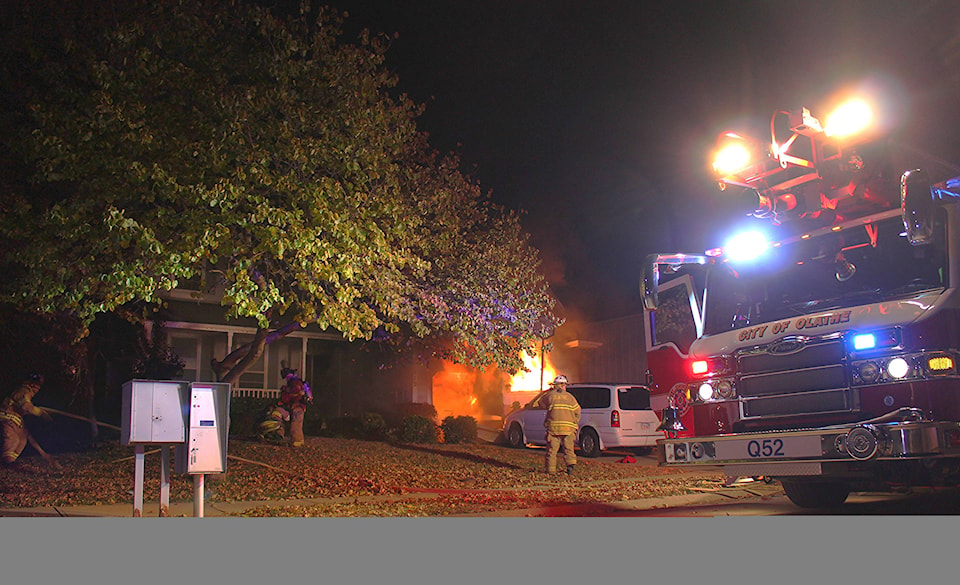Consider this scenario: It’s 2 a.m. when you and your family awaken to the blare of the smoke alarm and the smell of smoke. Do you know what to do?
If you and your family don’t have a plan in place, it could jeopardize your safety, or even prove deadly.
In a typical home fire, you may have as little as one to two minutes to escape safely from the time the smoke alarm sounds. That’s why home escape planning is so critical in a fire situation. It ensures that everyone in the household knows how to use that small window of time wisely.
“Developing and practising a home escape plan is like building muscle memory,” said John Klie, fire chief of the City of Terrace Fire Department. “That pre-planning is what everyone will draw upon to snap into action and escape as quickly as possible in the event of a fire.”
This year’s Fire Prevention Week theme, “Every Second Counts: Plan 2 Ways Out!” works to better educate the public about the critical importance of developing a home escape plan and practising it. The City of Terrace Fire Department is working in coordination with the National Fire Protection Association (NFPA), the official sponsor of the Fire Prevention Week for more than 90 years, to reinforce those potentially life-saving messages. Fire Prevention Week is October 8-14, 2017.
“Home escape planning is one of the most basic but fundamental elements of home fire safety, and can truly make the difference between life and death in a fire situation,” said Lorraine Carli, NFPA’s vice president of Outreach and Advocacy.
In support of Fire Prevention Week, Terrace Fire Department encourages all households to develop a plan together and practise it. A home escape plan includes working smoke alarms on every level of the home, in every bedroom, and near all sleeping areas. It also includes two ways out of every room, usually a door and a window, with a clear path to an outside meeting place (like a tree, light pole, or mailbox) that’s a safe distance from the home.
NFPA and the Terrace Fire Department offer these additional tips and recommendations for developing and practising a home escape plan:
• Draw a map of your home with all members of your household, marking two exits from each room and a path to the outside from each exit.
• Practise your home fire drill twice a year. Conduct one at night and one during the day with everyone in your home, and practice using different ways out.
• Teach children how to escape on their own in case you can’t help them.
• Make sure the number of your home is clearly marked and easy for the fire department to find.
• Close doors behind you as you leave — this may slow the spread of smoke, heat, and fire.
• Once you get outside, stay outside. Never go back inside a burning building. For more information about Fire Prevention Week in Terrace, visit www.terrace.ca.
